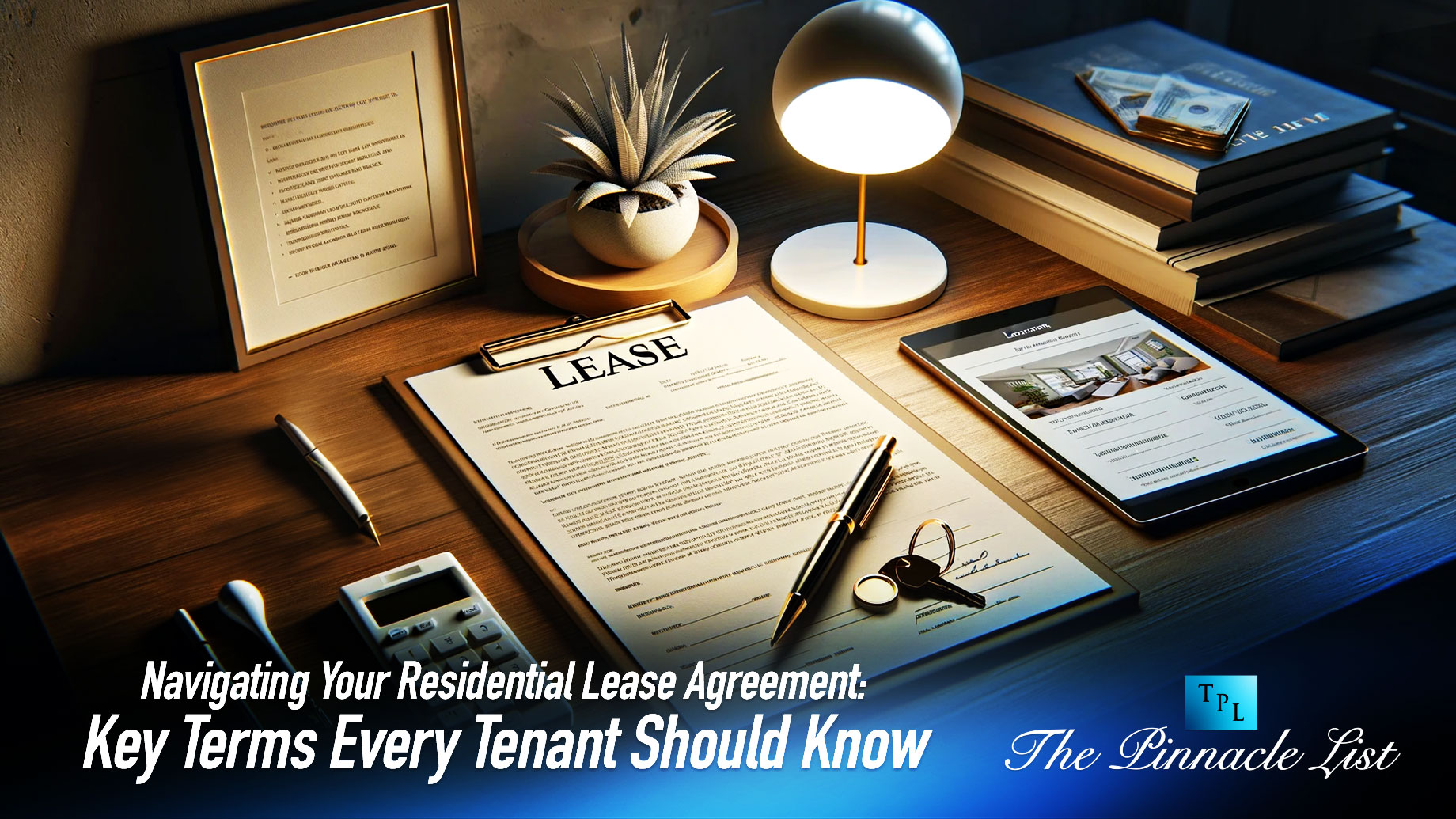
Getting your first residential lease agreement can be overwhelming. Lease agreements tend to include a lot of legal and real estate jargon that can be hard to get your head around. As you read your agreement, you might feel you have no idea what you’re even signing. But have no fear; we’re here to help.
Even the most seasoned of renters may feel a little overwhelmed by the legal terms used in a residential lease agreement, so we’ve created a list of the key terms that every tenant should know in this article. Read on now to learn more.
Lease Agreements: the Basics
A lease agreement, also known as a rental agreement or a tenancy agreement, is a contract entered into by a landlord and their tenant. A landlord may be an individual or a manager, and a tenant can be both an individual and an entity.
The role of a lease agreement is to set out the terms and conditions of the agreement. This means what a tenant can do while living in the property and what a landlord is entitled to.
Key Terms Every Tenant Should Know
To ensure that you have the best understanding possible of your lease agreement, we’ve taken a look at some of the key terms we think you need to know. Check them out below and get to know your lease agreement a little better.
Tenant
A tenant is an individual or an entity that rents or leases a property in exchange for payment. If you are the tenant, it is important to know that you have legal rights and responsibilities that should be outlined in the rental contract. These differ per state, so it is worth getting to know the specific laws in your area.
Some rights you have include a right to privacy, the right to have the property maintained by the landlord, and the right to occupy the premises.
Landlord
A landlord may also be an individual or an entity and is the party that owns a property and rents it out to another party (the tenant) in exchange for payment. Landlords may own both residential and commercial buildings as well as land for agricultural purposes.
Landlords have many responsibilities, including maintaining the property, handling repairs, collecting rent, and providing proper notice before entering the property.
Guarantor
A guarantor is an individual required by some landlords to sign the lease alongside the tenant. This person will need a stable income and a good credit history as they legally bind themselves to fulfill the financial obligations of the lease if the tenant cannot do so. This includes unpaid rent and any maintenance or repairs.
Often, a guarantor is required if the tenant has a poor credit history, and it provides peace of mind for the landlord that they will not be left without payment.
Lease term
The lease term is the duration of which the lease agreement is valid and in effect. It includes the start date, or the date on which the lease becomes effective, as well as the end date, which is the date that the lease ends.
Lease terms will also include renewal options, which are provisions for renewing the lease for an additional term.
Monthly rent amount
This is the sum of money a tenant pays to a landlord in exchange for the right to live there. It is a fixed amount and predetermined in the lease agreement. Most landlords request monthly payments, but some may be more flexible.
Your lease agreement will set out the due date for monthly payments as well as any late payment fees you will be subjected to.
Late payment fees
Late payment fees are the penalties you will incur if you fail to submit monthly payments on time. It compensates your landlord for financial loss and helps you pay on time. It is important to note that late fees are subject to state regulation, too.
Security deposit
This is the sum of money that a tenant must pay the landlord at the beginning of the lease agreement. It is to provide financial protection for the landlord (and incentivize the tenant), so if any damage does occur beyond normal wear and tear, or they’re left with unpaid rent, the landlord is covered.
Maintenance and repairs
Maintenance and repairs are usually expected of the landlord. A landlord must maintain a habitable property for a tenant to occupy.
Rights of entry
This refers to the legal authority granted to a landlord that allows them to enter a rental property under certain circumstances. These need to be outlined in the lease agreement and are also subject to local laws and requirements to ensure that a tenant’s privacy is respected.
In almost all cases, a landlord must provide a tenant with notice before they enter the property, and this is only different in cases of emergency.
Notice period
For a rental contract, the notice period is the amount of time you are required to provide before you take an action, most commonly terminating the lease. This will be set out in the lease agreement.
Lease break clauses
Both landlords and tenants can use lease break clauses. They set out a provision for either party to terminate the lease before its scheduled expiration date under conditions set out in the lease agreement.
Final Thoughts
Lease agreements can be tricky to get your head around, but understanding these few key terms will make the whole thing much simpler. Remember that if you’re totally stuck and don’t know what to do with your lease agreement, then there are many places to turn, including a solicitor, a citizen’s advice center, or legal aid.